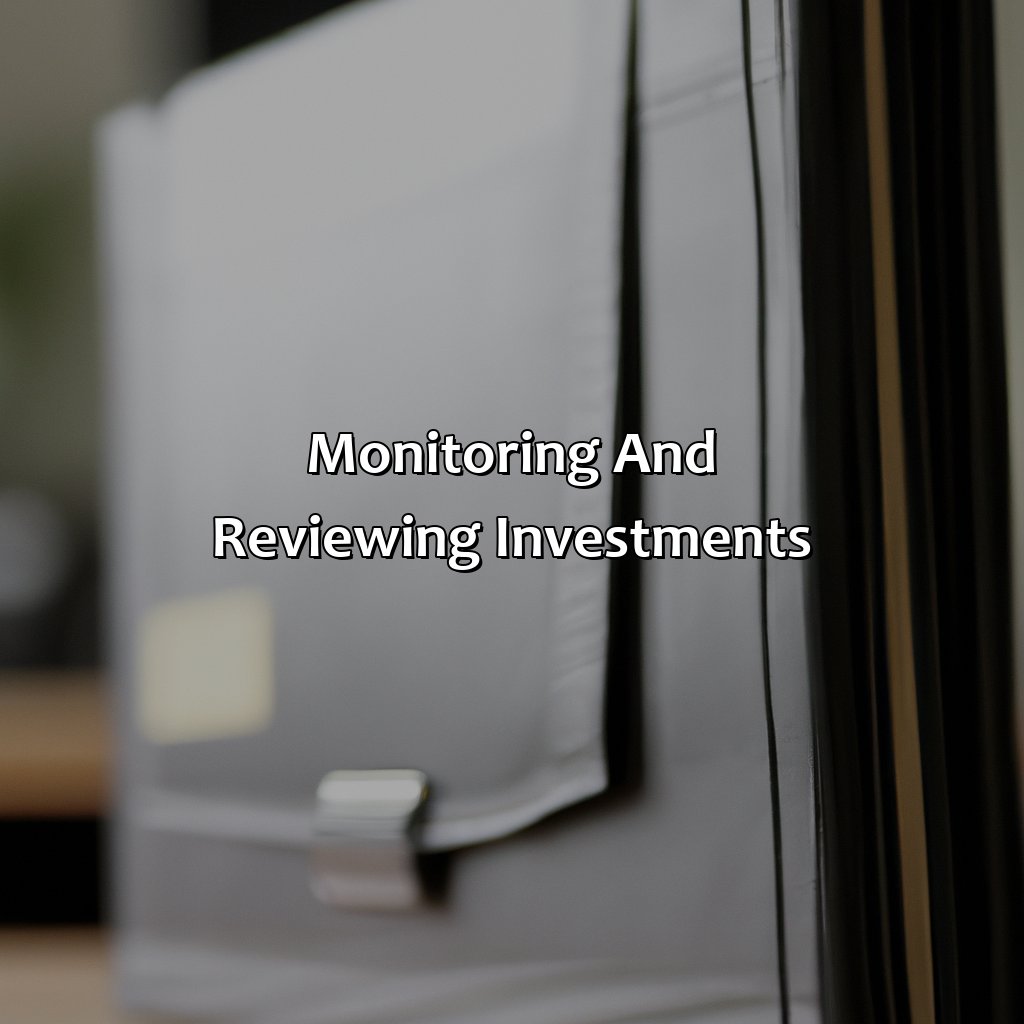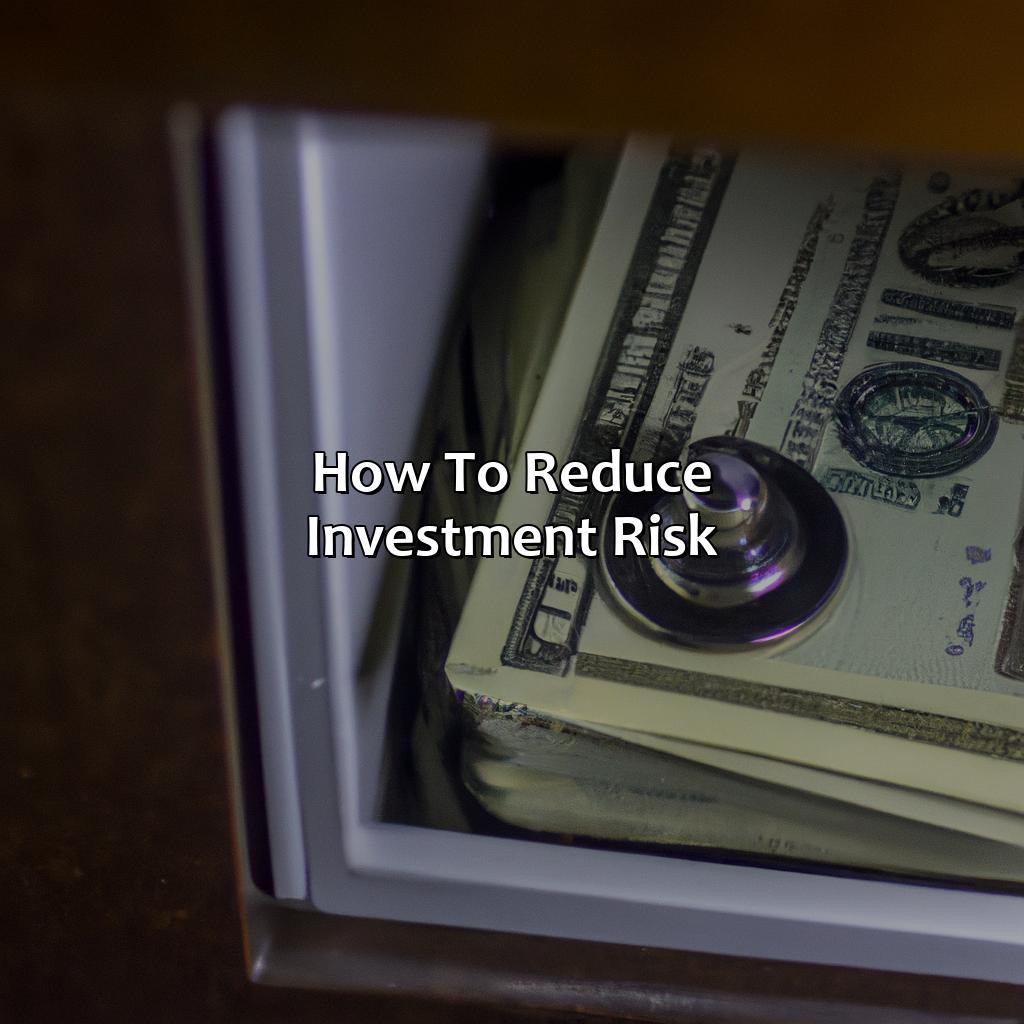How To Reduce Investment Risk?
Key Takeaways:
- Setting clear investment goals and understanding your risk tolerance is crucial when seeking to reduce investment risk. This helps to ensure that investments are aligned with your long-term objectives and personal preferences, reducing the likelihood of making erratic investment choices.
- Diversification of investments across different asset classes, sectors, geographies, and investment styles is a key strategy for reducing investment risk. This can help mitigate the impact of market volatility and unexpected events on individual investments.
- Conducting thorough research and analysis before making any investment decisions is essential in order to reduce investment risk. This includes assessing the fundamentals of the investment, as well as evaluating macroeconomic and market trends that may impact its performance. Regular monitoring and reviewing of investments can help to identify potential risks and adjust strategies accordingly.
You want to start investing but are afraid of taking too much risk? Don’t worry! With the right strategy, you can reduce investment risk and achieve the financial goals you set for yourself. This blog explains how.
Setting goals and risk tolerance
Investing comes with its own set of risks. To reduce investment risk, it is crucial to set realistic financial objectives and understand one’s risk tolerance. This involves determining the level of financial risk one is comfortable with and selecting the most suitable investment strategy.
To achieve long-term financial goals, investors must focus on diversifying their portfolio, investing in varied industries, and monitoring market conditions. This not only reduces the impact of losses but also increases potential gains. Additionally, investors should balance their investments with low-risk options such as bonds or fixed deposits.
One key factor to consider is the investor’s age. Younger investors can afford to take higher risks as they have a longer time to recover from any losses. On the other hand, older investors may prefer safer investment options as they’ll need the returns sooner.
According to a study by Morningstar, a financial research firm, investors who set measurable goals and avoided macroeconomic forecasting had a higher success rate in achieving their investment objectives.

Image credits: retiregenz.com by Joel Duncun
Diversification of investments
Diversifying Investment Portfolio: A Key to Minimize Risk
Investing is a great way to grow wealth, but it comes with inherent risk. By diversifying your investment portfolio, you can minimize that risk. Diversification means investing in a variety of assets, such as stocks of different companies, bonds, real estate, and commodities, instead of just one. With a diversified portfolio, you are less vulnerable to a single stock’s poor performance or a market downturn.
Investing in different classes of assets mitigates risk. For instance, investing in stocks of different companies or sectors can reduce the risk associated with a single company’s poor performance or a sector’s decline. Alternatively, investing in bonds or commodities can offer other benefits, such as a stable income flow or a hedge against inflation. Additionally, allocating your investment in different geographic locations, including international funds, can provide a more diversified exposure to the market.
Many investors have benefitted from diversification throughout history. For example, during the Great Depression, John Templeton diversified his portfolio by investing in stocks at bargain prices, and when the market recovered, Mr. Templeton’s portfolio grew exponentially. Similarly, during the 2008 financial crisis, renowned investor Ray Dalio’s diversification strategy helped him to weather the market downturn and emerge profitable.

Image credits: retiregenz.com by James Washington
Asset allocation
Asset allocation refers to the process of dividing your investments among different classes of assets, such as stocks, bonds, and cash, based on your investment goals, risk tolerance, and time horizon. By diversifying your portfolio, you can reduce the impact of any one asset class on your overall returns. Additionally, you can manage risk by periodically rebalancing your portfolio to maintain your desired asset allocation mix. Rebalancing involves buying and selling assets to bring your portfolio back to its target allocation.
Furthermore, it’s important to consider the tax implications of your investment decisions. You can minimize taxes by investing in tax-efficient funds, such as index funds or exchange-traded funds.
Overall, asset allocation is a fundamental aspect of investment management that can help you to reduce investment risk and achieve your financial goals.
If you want to avoid the fear of missing out on potential returns, start by assessing your risk tolerance and investment goals. Develop a well-diversified portfolio that aligns with your objectives, and then monitor and adjust your allocation as needed. With a sound investment plan in place, you can reduce the impact of market volatility and stay on track to meet your long-term financial goals.

Image credits: retiregenz.com by Harry Jones
Research and analysis
The Art of Conducting Research and Analysis for Reducing Investment Risk
To minimize investment risk, conducting thorough research and analysis is essential. In today’s dynamic market, relying solely on conventional research methods may not suffice. As an investor, it is crucial to adopt modern techniques that include Artificial Intelligence and Machine Learning.
By analyzing market and industry trends, identifying patterns, and exploring market data, investors can improve their decision-making process. It is also beneficial to gather primary and secondary data through surveys and expert interviews to form a more comprehensive understanding of potential investments. Moreover, the use of data visualization tools allows investors to represent data in a more meaningful and practical way.
To further enhance results, it is crucial to measure risks appropriately. A fundamental aspect of quantitative analysis is assessing the likelihood of market fluctuations and downturns. By using adequate risk models, investors can forecast the potential implications and returns on investment.
One true history of successful risk reduction through research and analysis is that of the world-renowned investor, Warren Buffet. Buffet’s investment philosophy involves conducting thorough research on industries coupled with an in-depth analysis of company financial statements. He also pays close attention to analyzing market trends to identify undervalued companies to invest in.

Image credits: retiregenz.com by Yuval Duncun
Monitoring and reviewing investments
Monitoring and Evaluating Investment Performance
As an investor, monitoring and evaluating the performance of your investments is crucial. Regularly tracking their progress can help you make informed decisions about buying, selling, or holding onto your investments. It’s essential to have a system in place to track profits and losses and identify any patterns, trends, or outliers.
To start, set clear investment goals, and regularly assess whether your investments align with them. Stay up-to-date on relevant news, market conditions, and any internal or external factors that may impact the performance of your investments. Use benchmarking to compare your portfolio’s performance against industry standards, and consider working with a financial advisor to evaluate your investments regularly.
It’s also important to review the fees associated with your investments. Lower fees can help improve overall investment performance, so it’s essential to ensure that you’re not overpaying for your investments.
In one instance, a friend invested heavily in a startup but failed to monitor it regularly. When they finally checked on it, they realized that the company had filed for bankruptcy, and they lost all their investment. This illustrates the importance of actively monitoring and evaluating your investments to reduce risk. By following best practices and staying on top of your investments’ performance, you can increase your potential for success.

Image credits: retiregenz.com by Yuval Washington
Five Facts About How To Reduce Investment Risk:
Diversification is key to reducing investment risk by spreading your money across different types of investments. (Source: The Balance)
Another way to reduce risk is to invest for the long-term, allowing your investments time to grow and recover from market downturns. (Source: Forbes)
Researching and analyzing potential investments before making a decision can help reduce the risk of choosing poorly performing assets. (Source: Investopedia)
Setting and sticking to a specific investment strategy can help avoid impulsive and emotionally-driven decisions which can lead to higher risk. (Source: NerdWallet)
Regularly reviewing and adjusting your investment portfolio can help ensure that it remains in line with your goals and risk tolerance. (Source: Charles Schwab)
FAQs about How To Reduce Investment Risk?
How can I reduce investment risk?
Investment risk is inherent in any investment. However, there are several ways to reduce investment risk, such as diversification, asset allocation, risk tolerance assessment, monitoring market trends, and investing for the long term.
What is diversification, and how does it help me reduce investment risk?
Diversification is the practice of spreading your investments across different asset classes, sectors, and geographic regions. It helps reduce your investment risk by minimizing the impact of any individual asset’s poor performance on your overall portfolio.
How can asset allocation help me reduce investment risk?
Asset allocation is the process of choosing a mix of asset classes that aligns with your investment goals, risk tolerance, and time horizon. By carefully selecting a range of different assets, you can reduce your investment risk by minimizing the impact of any individual asset’s poor performance on your overall portfolio.
What is risk tolerance assessment, and how can it help me reduce investment risk?
Risk tolerance assessment is the practice of evaluating how much risk you are willing to take on in your investment portfolio. It helps you create a customized investment plan that aligns with your investment goals, risk tolerance, and time horizon, reducing your investment risk by ensuring you only take on as much risk as you are comfortable with.
What is the importance of monitoring market trends and how can it help reduce investment risk?
Monitoring market trends is an important practice in investing. It enables you to stay up to date with the market’s performance and make informed investment decisions. By keeping track of the market, you can reduce your investment risk by spotting potential risks or opportunities before they become a significant threat to your portfolio.
How does investing for the long term help me reduce investment risk?
Investing for the long term is a proven strategy for reducing investment risk. It allows you to ride out the market’s short-term volatility and benefit from the market’s long-term growth. By adopting a long-term mindset, you can create a diversified portfolio aligned with your investment goals, risk tolerance, and time horizon.
 Checkout this IRS Loophole
Checkout this IRS Loophole 
